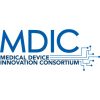The Internet of Things (IoT) is revolutionizing the way we live and work. From tweeting refrigerators to driverless cars, a vast array of physical devices are now connected to the Web.
Nowhere is the impact felt as acutely as in the healthcare sector. This year, IoT deployments will grow faster in the health arena than in any other industry. In fact, according to McKinsey, the so-called “Internet of Medical Things” (IoMT) will have a global economic impact of $1.6 trillion by 2025.
Web-enabled medical technology has the potential to be truly transformative. To understand why, you only need to consider some of the potential applications. Imagine, for instance, a “smart pill” that, once swallowed, could collect diagnostic information from inside your body, and wirelessly transmit its findings to your doctor. Or how about a wearable ECG that inconspicuously monitors your heart 24/7 and pings an early warning to your doctor days or weeks in advance of a cardiac event?
Incredibly, both these gadgets are already in production, and have the potential to save countless lives and a huge amount of unnecessary suffering. And that’s just the beginning: As IoMT technologies reach maturity, they will revolutionize many medical treatments, lower costs across the board, radically reconfigure healthcare delivery, and improve health and wellness worldwide.
To get a sense of just how transformational this kind of connectivity can be, consider the following ways that the IoMT will revolutionize one vital aspect of healthcare—the way we run clinical studies.
- Recruiting participants. Finding willing and qualified study participants is always a headache. More than 10% of clinical trials fail to enroll a single qualified patient, and as many as 90% face delays because of recruitment issues. As connected health-tech devices become commonplace, however, we’ll amass an ocean of data, and finding qualified patients will be as simple as tagging people who meet the necessary criteria and who opt-in. IoMT devices will also help researchers reach out to patients individually, recruiting patients directly instead of issuing easy-to-ignore, generalized calls for subjects.
- Retention. Once you’ve found your subjects, you have to keep them—but research shows that more than a quarter of participants drop out before the conclusion of their clinical trial. With IoMT devices, researchers can make testing far less burdensome: Useful data can be gathered passively and remotely, so test subjects don’t have to leave their homes and trek to clinics for in-person testing. New tools like mobile surveys and online games will further help by making participation easy, and even fun.
- Data Capture. Up to 30% of participants get excluded from trials because of incomplete data, but as we start gathering biometrics from always-on IoMT devices such gaps will become less common. The data we gather could also prove more useful, since we’ll be able to monitor subjects in real-world settings instead of clinical environments.
- Data Analysis. The data delivered by IoMT devices will spark new innovations in data processing and analysis—in part because with so much information flooding in, we’ll have no choice but to develop automated AI tools capable of spotting patterns and conducting statistical analyses. As AI tools are trained using the newly available data, they’ll get better and better at their jobs, sparking a virtuous cycle that will allow us to perform trials faster and more accurately than ever.
Of course, it’s not all good news. The average clinical trial already costs $30–40 million to complete, and implementing new technologies and ways of working will likely require some additional initial investments. To succeed, tech-savvy researchers and practitioners will need to combine proven clinical know-how with new kinds of expertise in data science.
Most important, as a sector we’ll also have to dedicate serious time and energy to managing patient privacy and cybersecurity issues. New technologies bring new liabilities, and with regulators still running to catch up with new IoMT technologies, both device manufacturers and clinical users will need to pay close attention to the shifting legal landscape.
Still, for clinical trials and and the healthcare sector at large, the potential rewards far outweigh the risks. Across our industry, IoMT will enable us to conduct research in ways that would never previously have been possible. When it comes to the Internet of Things, a real evolution is underway in the healthcare industry.








